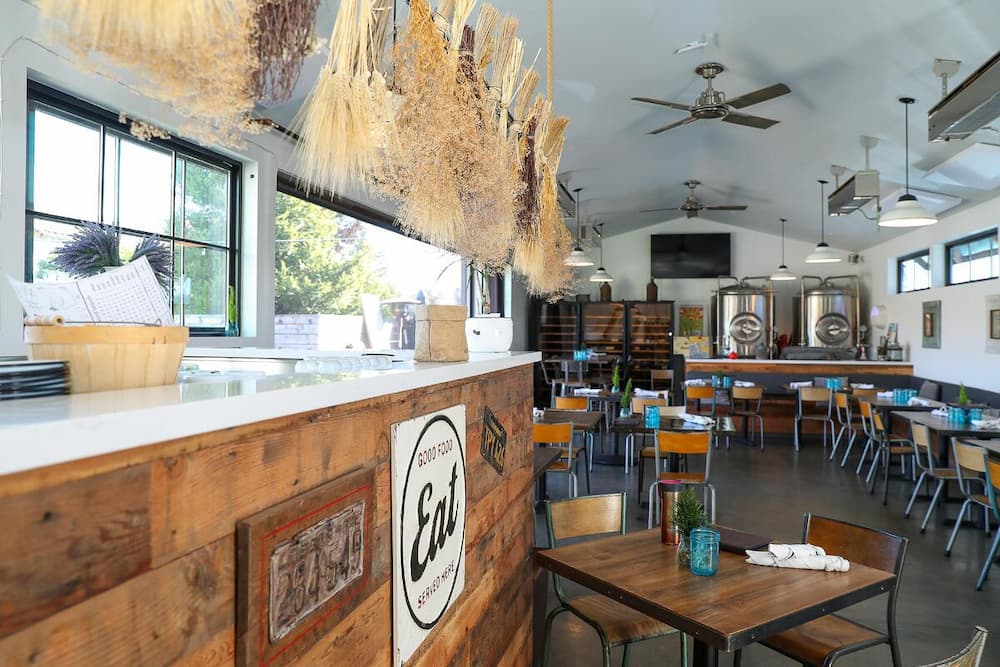It’s no secret that many people dream of opening up their very own restaurant—one that brings to life the cuisine of their culture, transports patrons into la nonna’s kitchen, or redefines an entire culinary style. Just about every would-be restaurateur envisions that the new eatery will be wildly successful from day one.
Realistically, few are. But that shouldn’t dissuade you.
The reason for the industry’s high turnover rate is often the result of naïveté and being ill-prepared for the rigorous demands and high startup costs involved.
Are you curious about how to start a small restaurant business? The recipe for success starts with the right preparation. Read on for our top tips and advice about opening a restaurant in your local neighborhood, from menu selection to local marketing strategies.
Opening a Restaurant in a Local Neighborhood: Top Tips & Advice
If you wish to succeed in the restaurant industry, there are a host of factors and considerations you must weigh carefully in the months preceding opening night. It requires a blend of artistry and business prep in order to weather the inevitable storms and challenges that lie ahead. But what are the steps to opening a restaurant? Consider the following:
Opening a New Restaurant Starts with the Concept
As you run through the early phases of opening a restaurant business, the first question you should be asking yourself is what makes you unique? What is the draw that will set you apart from your competitors? Your concept should address this first and foremost. Per Forbes:
It's essential that your restaurant offers a unique experience. It could be a Wine Bar with small plates, or a BBQ theme or a Create Your Plate concept. Whatever you decide, it is critical that the environment and "vibe" within the restaurant places the guest firmly inside the experience you're attempting to create. Don't confuse the guest with a concept that's disconnected.
Whatever you land on, whether it be fast and casual dining or an upscale culinary fusion, it’s essential that you find your identity and then build upon that foundation. Your concept should inform every aspect of your establishment, including:
- The décor
- The music
- The menu
- The staff
- The customer service level
- The lighting
From the small details to the bigger picture, it’s essential they work together to create a seamless dining experience that will make a visit to your business memorable.
Consider the Business Plan
Creating a clientele is no easy feat. It requires planning, marketing execution, and then fulfilling your value proposition. Entrepreneur Magazine notes:
A hard reality is that many restaurants fail during their first year, frequently due to a lack of planning. But that doesn't mean your food-service business has to be an extremely complex operation. In fact, the more streamlined you can make it, the better your chances for success.
The foundations of your restaurant are built upon the business’s blueprint. Naturally, you may be wondering how to start a restaurant business plan. To begin, you should continue the previous line of inquiry, asking yourself questions such as:
- What type of food will I be serving?
- Who are my ideal patrons?
- What is my target demographic?
- How will my restaurant connect with customers?
- How do I best reach that type of person?
- Who are my competitors?
- What are their strengths and weaknesses?
- What do they charge?
- What are the services they offer?
- What are my unique value and selling propositions?
Once you’ve fully fleshed out who and what you are, you can begin outlining your business plan for opening a new restaurant. This will include:
- An executive summary – Sums up the business plan and estimates the startup costs.
- Description of your restaurant – Briefly overviews the restaurant, its name, food, and unique value proposition.
- Market analysis – Compares competitors and outlines the economics of the local market.
- Restaurant menu – Lists the expected food and beverage items to be made by the head chef and/or bartender.
- Employees and management team – Describes the business structure, management team, and employment philosophy.
- Restaurant design – Details the concept and expected décor/themes.
- Financial analysis – Projects estimated costs, revenue, and financial goals.
- Marketing plan – Explains plans for reaching customers and driving traffic through the door.
Utilize your Marketing Channels
Although you may hope that your business blows up via word of mouth, banking on this is a surefire way to sink your restaurant before it ever has the chance to embark. It’s essential that you invest heavily in a variety of marketing channels, particularly those that are geared towards your target audience. But what do you do if you have a limited budget? The Balance writes:
What little money you have needs to be spent wisely. Think smarter, and think about how to stretch your spending further. You have to make the most out of the ad dollars you do have, no matter how limited you are. These cost-effective ways to advertise your business give you a variety of options to choose from, especially if you're on an ad budget diet.
With your budget in mind, there are a variety of avenues you can take, including:
- TV and radio commercials
- Social media
- Coupons
- Newsletters
- Website SEO
That said, recently, one of the most effective marketing tools for fledgling restaurants and restaurant owners is Nextdoor. This neighborhood hub informs people in the local neighborhood about nearby businesses. By signing up with a free Business Page and listing your establishment on the app, you put yourself on the map and can start engaging with the customers closest to you (your neighbors!).
Perfect the Menu
Although there are many things to do prior to this stage, few aspects are as critical as the menu. This starts with finding a head chef who is driven, ambitious, creative, and who can bring your culinary vision to life. And be sure your visions align—you know what they say about square pegs in round holes…
Once you’ve found the right person, it’s essential that you work together to create a simple menu of high-quality foods. Since, in the mind of your customers, you’re only as good as your last plate, it’s crucial that you keep the menu limited in order to maintain consistency and create a memorable flavor pallet that will keep patrons craving more. Everything that goes on the menu and everything that goes on the plate should have a reason to be there.
Striving for simplicity will ensure that each dish is delicious.
Hire the Right Staff
Similar to your chef, it’s crucial that you hire a staff that is passionate and driven. Per Entrepreneur:
The people that make up your team will have just as much to do with the success of your restaurant as your food will. Rude or forgetful hosts or waiters, poorly trained chefs or even absent-minded bussers can cause the experience of a guest to go from great to poor in a sentence – or lack of one, especially when it comes to allergies and apologies.
Finding talent isn’t easy. In fact, it’s one of the hardest aspects of opening up a new restaurant business. That said, it can make or break you. So, be sure to take the following steps:
- Make a list of the staff you need to run the restaurant operations efficiently
- Conduct thorough interviews
- Remain open and always recruiting for new hires
- Be willing to fire lackluster employees
- Invest in training and in the staff
- Create a team that is unified in its purpose
Have a Soft Opening
Once you’ve perfected the menu, it’s important that you test it with a soft opening. This can include family, friends, and locals who happen to stumble upon your restaurant. Ideally, this mix of people will give you honest feedback on everything from your dishes and décor to your service. It’s your trial run before things get serious and can help ensure that you’re ready for day one.
Even though you may be ready to open your restaurant, remember that your business is always a work in progress. Have an open mind when hearing from customers, and if necessary, be willing to make changes, offer promotions like happy hours, or discounts that will get new customers in the door.
Be Realistic
If you go in and expect to be an immediate hit, you’re setting yourself up for disappointment. It’s crucial that you understand that there will likely be trials and tribulations each and every day. The restaurant industry is fickle and is constantly changing, so it’s important you plan for both the good and the bad. According to Kevin Boehm, founder of Boka Restaurant Group:
It's so important for restaurateurs to have a realistic business model going into the opening of the restaurant, with reachable numbers. We build very conservative performance before we open up a restaurant, and we base our real estate deals on those realistic performance: if we’re going to do $30 million at a place, we consider the realistic floor, and of that floor, if you can run 6% occupancy costs, then you feel good about it, on a conservative level.
By setting reachable goals and striving for those, it’s much easier to chart your growth and remain positive about your efforts.
Get Going
Now that you know how to start a restaurant, it’s time for you to get to work. Although the task ahead may not be easy to accomplish, if you go in with the right mindset, consider the restaurant startup costs, prepare accordingly, and utilize local marketing tools such as Nextdoor, you’ll set yourself up for success today, tomorrow, and far into the future.





-1%20(1).jpg?width=200&name=iStock-1140598547%20(1)-1%20(1).jpg)
.jpg?width=200&name=NextdoorOakland-134-min%20(1).jpg)
.jpg?width=200&name=iStock-1160229044-min%20(1).jpg)
